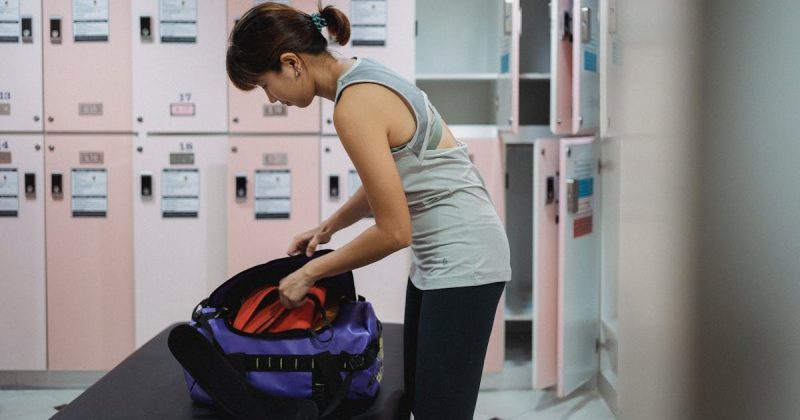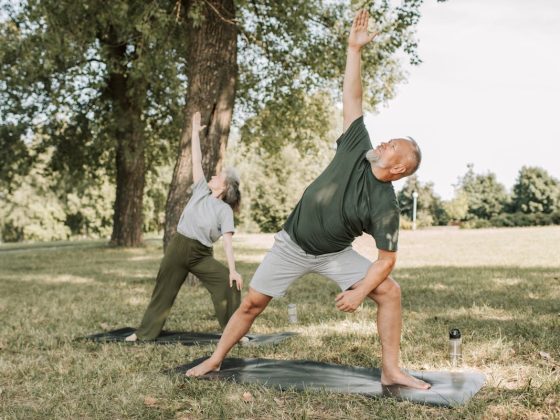When it comes to maximizing your workout efficiency and performance, preparation is key. Whether you’re a seasoned athlete or just starting your fitness journey, there are essential things to do before working out that can enhance your experience, prevent injury, and help you achieve your goals. This article will delve into various aspects of pre-workout preparation, from physical readiness to mental focus.
1. Set Clear Goals
Define Your Objectives
One of the first things to do before working out is to set clear, achievable goals. Understanding why you’re working out can help tailor your routine to meet your specific needs.
- Identify Your Purpose: Are you looking to build muscle, lose weight, improve cardiovascular health, enhance flexibility, or increase overall wellness? Writing down your purpose can clarify your direction.
- SMART Goals: Use the SMART criteria—Specific, Measurable, Achievable, Relevant, and Time-bound. For instance, instead of saying, “I want to lose weight,” you might say, “I want to lose 10 pounds in three months by exercising five days a week.”
- Specific: Define exactly what you want to achieve.
- Measurable: Include metrics to track progress.
- Achievable: Ensure your goal is realistic.
- Relevant: Align it with your interests and motivations.
- Time-bound: Set a deadline to create urgency.
Short-term vs. Long-term Goals
Breaking down your objectives into short-term and long-term goals can help you stay motivated.
- Short-term Goals: These might include completing a specific number of workouts per week, running a certain distance, or trying a new class. Aim for a timeframe of a few weeks to a couple of months.
- Example: “I will work out four times a week for the next month.”
- Long-term Goals: These could be larger milestones, such as completing a 5K race, achieving a specific body composition, or lifting a certain weight. Long-term goals often span several months to a year.
- Example: “I will run a half-marathon in six months.”
2. Assess Your Fitness Level
Know Where You Stand
Before diving into any workout routine, it’s essential to assess your current fitness level. This helps you choose appropriate exercises and set realistic goals.
- Fitness Tests: You might consider standardized tests like the beep test for cardiovascular endurance, a one-rep max test for strength, or flexibility tests like the sit-and-reach.
Conduct a Self-Assessment
Performing a self-assessment allows you to understand your strengths and weaknesses better.
- Example Exercises:
- Cardiovascular Endurance: Try a timed mile run or a 3-minute step test to gauge how well your heart and lungs perform during physical activity.
- Strength Assessment: See how many push-ups or sit-ups you can do in one minute. This can help you establish a baseline for strength training.
- Flexibility: Perform a series of stretches and note how far you can reach compared to your body’s natural range of motion. The sit-and-reach test is a classic method for measuring flexibility.
Seek Professional Evaluation
If you’re new to working out or have specific goals, consider consulting a fitness professional. Personal trainers can provide tailored assessments and help create an individualized workout plan based on your current fitness level.
3. Choose the Right Time
Listen to Your Body’s Rhythm
Finding the best time to work out is crucial for optimal performance.
- Chronotypes: Research indicates that people have different chronotypes—morning larks, night owls, and somewhere in between. Understanding your chronotype can help you identify your peak performance times.
- Morning Larks: Tend to perform better in the morning. They might find morning workouts energizing and more productive.
- Night Owls: Often feel more alert and energetic in the evening, making nighttime workouts more appealing.
- Energy Levels: Keep a journal for a week to track when you feel most energized, whether in the morning, afternoon, or evening.
Consider Your Schedule
Choose a time that consistently fits into your routine, making it easier to establish a habit.
- Consistency is Key: Try to stick to a specific workout schedule (e.g., every Monday, Wednesday, and Friday) to build a habit.
- Flexibility: While consistency is essential, it’s also good to be flexible. If a scheduled workout doesn’t happen, find a time later in the day or week to make it up.
4. Nutrition: Fuel Your Body
Pre-Workout Meals
What you eat before a workout can significantly impact your performance.
- Balanced Nutrient Profile: Aim for a mix of carbohydrates for energy, protein for muscle repair, and healthy fats for sustained energy.
- Examples of Good Pre-Workout Meals:
- Oatmeal topped with fruit and a scoop of nut butter: Provides complex carbs for energy and protein for muscle support.
- Greek yogurt with honey and mixed berries: A great source of protein, vitamins, and antioxidants.
- Whole grain toast with avocado and a poached egg: Delivers healthy fats and protein while keeping you satiated.
Timing Your Meals
Ideally, eat a substantial meal 2-3 hours before your workout.
- Closer to Workout: If you’re eating closer to your workout (30-60 minutes prior), choose easily digestible snacks.
- Quick Snack Ideas: A banana with almond butter, a smoothie made with spinach, banana, and protein powder, or a handful of trail mix.
Hydration Matters
Dehydration can lead to decreased performance and fatigue.
- Daily Water Intake: Aim to drink at least 64 ounces (2 liters) of water daily, adjusting based on activity level and climate.
- Hydration Strategy: Start hydrating early in the day, and consume water consistently throughout.
- Electrolyte Balance: Consider electrolyte-replenishing drinks if you’re engaging in high-intensity workouts or exercising for over an hour. Sports drinks can be beneficial for prolonged workouts, as they help replenish electrolytes lost through sweat.
5. Warm-Up Properly
The Importance of Warming Up
A proper warm-up prepares your body for exercise, increases blood flow to your muscles, and helps prevent injury.
- Muscle Activation: Warming up increases the elasticity of your muscles and joints, making them less prone to injury. It also raises your heart rate gradually, preparing your cardiovascular system for more strenuous activity.
Dynamic Stretching
Incorporate dynamic stretches into your warm-up routine.
- Examples of Dynamic Stretches:
- Arm circles and swings: Loosen up your upper body and shoulder joints.
- High knees and butt kicks: Increase heart rate and activate your legs.
- Walking lunges and side lunges: Prepare your hips and legs for movement and enhance lower body flexibility.
Specific Warm-Up Exercises
Consider doing lighter versions of the exercises you plan to perform.
- Weight Training Warm-up: Use lighter weights for the first set of exercises to help prepare your muscles for heavier loads.
- Example: If you plan to bench press 150 pounds, start with 50 pounds for 10-15 reps.
- Cardio Warm-up: If you plan to run, start with a brisk walk or light jog for about 5-10 minutes. This helps to gradually increase your heart rate and warm up your leg muscles.
6. Mental Preparation
Focus Your Mind
Mental readiness is just as important as physical preparation.
- Mindfulness Practices: Engage in mindfulness practices, such as meditation or deep breathing, to clear your mind before a workout. A few minutes of focused breathing can help center your thoughts and reduce anxiety.
Create a Positive Mindset
A positive attitude can significantly influence your workout performance.
- Affirmations: Use affirmations like “I am strong” or “I can achieve my goals” to boost confidence. Write them down and read them aloud to reinforce positivity.
- Visualization: Imagine yourself completing your workout successfully. Visualizing success can help motivate you and reduce anxiety.
Eliminate Distractions
Before you begin, ensure that you’re in a distraction-free environment.
- Minimize Interruptions: Turn off your phone or put it on “Do Not Disturb” mode. If you’re in a gym, choose a spot away from high-traffic areas.
- Focus Techniques: Consider using techniques like the Pomodoro method (25 minutes of focused work followed by a 5-minute break) to help keep your mind engaged without distractions.
7. Gather Your Gear
Choose Appropriate Attire
Selecting the right workout clothes is essential.
- Comfort and Fit: Choose clothes that fit well and allow for freedom of movement. Fabrics like polyester and spandex wick moisture away, keeping you dry. Avoid cotton, as it retains moisture and can lead to chafing.
- Seasonal Considerations: Dress appropriately for the season. In winter, layer your clothing, and in summer, opt for lightweight, breathable fabrics.
- Layering Strategy: In colder months, wear moisture-wicking base layers, insulating middle layers, and weather-resistant outer layers to stay warm without overheating.
Prepare Your Equipment
If you’re going to the gym, ensure that you bring all the equipment you need.
- Essential Items: Don’t forget a water bottle, towel, resistance bands, or any specific gear relevant to your workout routine.
- Home Setup: If exercising at home, ensure your space is organized, with all necessary equipment easily accessible. This could include weights, mats, or other tools you’ll be using.
Organize Your Gym Bag
Keeping your gym bag organized can save time and reduce stress before workouts.
- Pack Essentials Ahead of Time: Prepare your gym bag the night before, ensuring you have everything you need, such as a change of clothes, water, and snacks.
- Check Your Gear: Make it a habit to regularly check your gear for wear and tear, ensuring everything is in good condition before heading out.
8. Breathing Techniques
Master Your Breath
Proper breathing techniques can enhance your workout performance.
- Pre-Workout Breathing: Practice deep breathing exercises to relax your mind and body. Inhale deeply through your nose, filling your lungs, and exhale slowly through your mouth. This can help lower stress levels and prepare you mentally.
Coordinate Breathing with Movement
During your workout, focus on coordinating your breath with your movements.
- Rhythmic Breathing: For example, during strength training, exhale during exertion (lifting the weight) and inhale during relaxation (lowering the weight). For running, try inhaling for three steps and exhaling for two to create a rhythm that enhances endurance.
- Breathing Exercises: Incorporate diaphragmatic breathing, where you breathe deeply into your abdomen rather than shallowly into your chest. This can improve oxygen exchange and overall performance.
9. Listen to Your Body
Check for Readiness
Before starting your workout, take a moment to check in with your body.
- Self-Assessment: Ask yourself how you feel. Are you tired, energetic, sore, or in pain? If you’re feeling discomfort, consider modifying your workout or taking a rest day.
Adjusting Your Plan
If you’re feeling unusually tired or sore, consider modifying your workout.
- Alternative Options: If you’re too fatigued for a high-intensity workout, consider switching to low-impact activities like yoga or walking. These can still provide benefits while allowing your body to recover.
- Recovery Days: Incorporate rest or active recovery days into your routine to prevent burnout and overtraining. These days could involve light stretching, gentle yoga, or leisurely walks.
10. Create a Workout Playlist
The Power of Music
Many people find that listening to music enhances their workout experience.
- Mood Enhancement: Music can elevate your mood, helping you push through tough workouts. Research shows that music can improve endurance and performance during high-intensity exercises.
Experiment with Different Genres
Don’t be afraid to experiment with different music genres to find what resonates with you.
- Personalization: Tailor your playlist to fit the type of workout. Upbeat tracks work well for cardio, while slower tunes may be better for stretching or cool-down periods.
- Curate Your Playlist: Create specific playlists for different types of workouts. For example, have a high-energy playlist for intense cardio sessions and a calming playlist for yoga or stretching.
11. Connect with Others
Find a Workout Buddy
If you enjoy social interaction, consider finding a workout buddy.
- Mutual Motivation: Working out with a friend can make exercising more enjoyable and keep both parties accountable. You can encourage each other during tough moments, making workouts feel less daunting.
Join a Class or Group
Another option is to join a fitness class or group.
- Structured Environment: Classes often provide a structured environment, which can help you stay focused and motivated. Plus, the instructor can provide guidance and modifications as needed.
- Networking: Connecting with others who share similar goals can provide valuable support and encouragement. Building a fitness community can foster accountability and friendship.
12. Review Your Progress
Reflect on Your Journey
Before you start your workout, take a moment to reflect on your progress.
- Track Your Achievements: Review any fitness journals or apps you may use to track workouts, personal records, and achievements. Reflecting on your journey can help reinforce your commitment and motivate you to keep going.
Set New Challenges
If you’ve reached a milestone, consider setting new challenges for yourself.
- Growth Mindset: Always strive for growth. Whether it’s increasing weights, trying new workout styles, or adding more reps to your routine, continuous improvement is vital for maintaining interest.
- Celebrate Small Wins: Acknowledge your accomplishments along the way, no matter how small. This could be treating yourself to new workout gear or taking a day off to relax.
Setting Clear Goals and Assessing your Fitness Level
Incorporating these things to do before working out can significantly enhance your exercise experience and lead to better performance. From setting clear goals and assessing your fitness level to warming up and mentally preparing yourself, each step plays a crucial role in your success.
Remember, preparation is not just about the physical aspects; mental readiness and a positive attitude are equally important. By taking the time to prepare adequately, you’ll be setting yourself up for a successful and enjoyable workout, leading to long-term fitness success and well-being. Whether you’re training for a specific event or simply aiming to improve your health, these preparatory steps will empower you to make the most of every workout.



